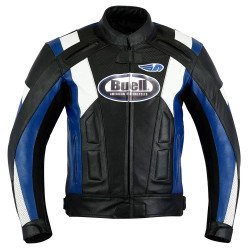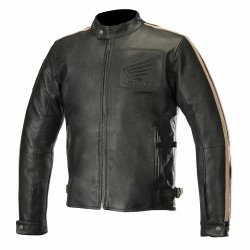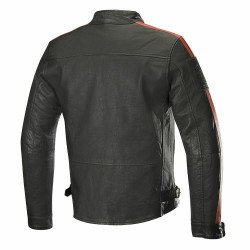Natural leather is one of the most versatile and pleasant materials globally. It provides a choice of stunning finishes, textures, and colors that are both comfortable and long-lasting—designed Master Leather, the world's finest leather fashion brand, has been built on a foundation of quality and pride. We're well-versed on the topic of leather. What makes it tick. It's worth it. The way it enhances your appearance and enhances your sense of well-being, as should any high-end object. For years of enjoyment and long-lasting usage, our leather outfits are the best in the business. We've honed our leather-care skills over the years via trial and error. It's essential to know how leather is created and how to maintain your leather looking its best for a long time to come, so read on for more.
Where does leather originate from, and how is it made?
For more than 5,000 years, leather has been created all over the globe, and the earliest tanner's guilds can be dated back to the 12th century. Tanning procedures have evolved throughout the years, but the ultimate product has remained the same.
The contemporary tanning process begins with a protective treatment applied to the hides or skins of the animals (the pelts of younger or smaller animals). Next, they are subjected to a chemical treatment to pliable and supple. Tanning the leather is now easier for tanners since they may work with it to alter its thickness, color, and several other characteristics. Once the finished product is ready, it is shipped to a manufacturer, who uses it to make clothing and accessories.
Leather's Appearance and Texture:
Most people's initial instinct is to reach out and touch leather when they see it. A leather's hand refers to its texture. There is a direct correlation between the softer the writing and the higher the price tag.
Leather's quality is heavily influenced by the genetic make-up of its raw material. There are naturally wrinkled, softer, or thinner regions in every hide and skin. The final result is also influenced by external variables like weather and food availability. Because leather is a natural product, no two pieces are identical because of its specific blemishes on the surface.
Shopping Tips:
Consider the style, cut, and lining that best suit your needs. Quality raw materials and the design of the garment or accessory are two significant factors in determining the price of leather.
Leather Facts:
Puncture-resistant leather is a good choice for shoes.
Leather is a moisture-repellent material that keeps out the heat, cold, and wind.
Many weights and types of linings are available for leather objects, making them suitable for use in hot and cold climates.
While leather garments may be molded and shaped to fit your body; they can also preserve their form.
Leather is soft and supple because it can breathe.
Leather is a by-product of the food industry derived from agricultural products. Hides are purchased and turned into exquisite leather goods.
Protecting and maintaining leather:
If you want to keep your leather or suede looking new for longer, invest in high-quality water and stain-resistant treatment like our Master Leather and Suede Protector. Silicone and wax, which degrade leather's natural oils, aren't in our proprietary mix.
All varieties of leather and suede should be protected using Master Leather and Suede Protector, which we suggest. Your new leather item should be treated soon after purchase and then every two or three months if you use it often.
To keep your finished leather moisturized, dab a soft cloth with a high-quality leather lotion.
Use of mink oils, saddle washes, or shoe creams is prohibited.
In addition, certain substances may cause the leather to be harmed.
Make sure to try any leather care and protection products in an inconspicuous location first.
Make sure you don't carry much weight in your pockets, such as a key chain. It will cause the leather to be stretched.
Make sure you don't have your leather smelling like hair spray or perfume while wearing it.
Use of pins, sticky emblems, or tape on leather is not recommended.
Rubber cement may be used to patch up frayed hems.
Cleaning:
Remove any liquid stains by wiping them away gently with a clean, absorbent cloth.
Leather that has been soiled by winter salt may be cleaned with a moist cloth and left to dry naturally.
If the stain is more severe, take your leather to professional cleaning. The leather will crack, discolor, and shrink if cleaned using conventional dry cleaning procedures, which remove the leather's natural oils. So it is because an expert cleaner will employ a different technique. Furthermore, for best results, wash all items from the same color family together.
Care When Wet:
Allow your leather to dry at room temperature if it becomes wet. Drying leather with a dryer is not recommended at all. Instead, apply Master Leather and Suede Protector at this point. To restore the nap, use a soft cloth to buff the suede. Drying wet faux fur is most accessible with a hairdryer set to the lowest heat setting. To keep your skin looking its best, shake it while it's drying and while you're wearing it.
Storage:
Using a broad wooden, plastic, or cushioned hanger to store your leather coat or jacket can help it retain its form.
Keep leather in an excellent, dry location that is well-ventilated. Avoid regions that are too hot or too damp, such as attics or basements.
Use breathable material, such as cotton sheets, to protect it from dust and moisture when keeping your leather. Excessive drying will occur if plastic bags or covers are used.
Leather should show its wrinkles and folds. If you must iron the leather, do it with a cold to medium iron and a big piece of brown paper over it. Don't overheat the leather, which will make it shine.
The longer you leave your leather out in the sun or heat, the worse it will become.















